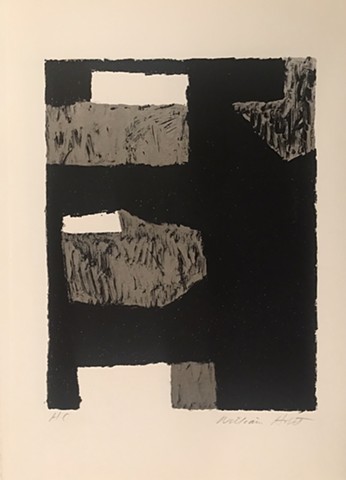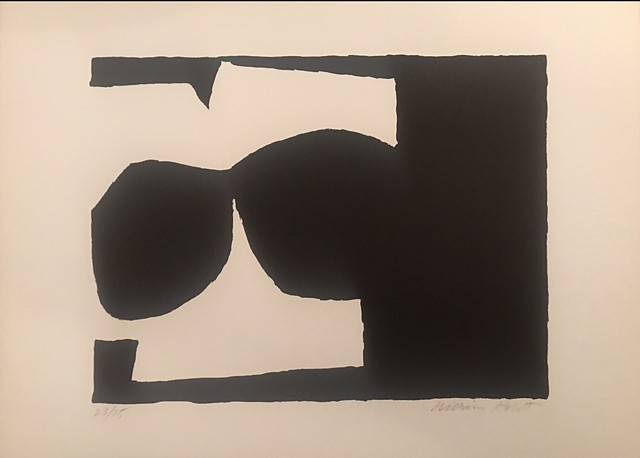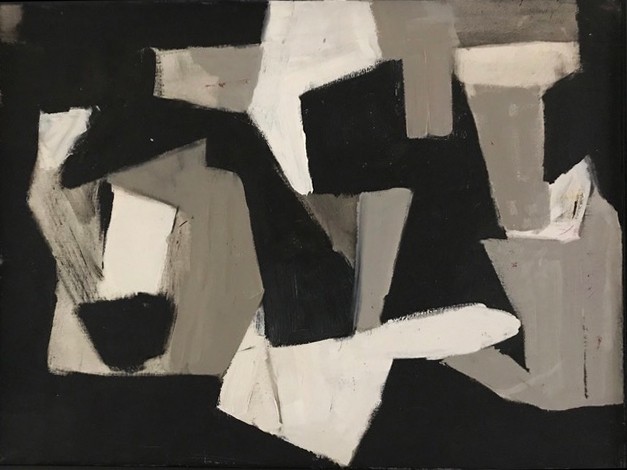William Holst
New Jersey born, William Holst studied at the Massachusetts College of Art and came to New Hampshire in 1938 to teach at Proctor Academy in Andover. After military service in World War II, he returned to New London, NH, to head the art department at Colby Junior College for Women (later Colby Sawyer College). Carol Lummus was one of his students. He lived there from 1948 to 1974, retiring in 1977 but continued to teach at the Institute of Contemporary Art in Boston.
He was one of New Hampshire’s early abstract artists, a passionate advocate of modernism as his canvases and sculptures show. He was profoundly influenced by his study with Hans Hoffman beginning in 1948. Editions of his lithographs were printed in Paris by The Imprimerie Maeghtbeginning in 1967.
He was a founding member of the New Hampshire Art Association and volunteered to be on the exhibitions committee in 1940 and a demonstrator of print making in the first annual show in Hanover. After the war he took over the exhibition committee again for the second Currier exhibition in 1948. He and other modernists on the committee encouraged submissions by “non-objectivist” NY artists who summered in New Hampshire, perhaps to bolster modernism in the state. The executive committee itself selected the works for that exhibit.
Dorothy Adlow, art critic for the Christian Science Monitor, specifically noted it had “more paintings of abstract character than might be expected in New Hampshire” and suspected that “natives may long for more naturalistic presentation of scenery.” Of these Lassonde’s Cosmic Space and Bartlett Tracy’s Space Enigma were mentioned as was Holst’s contribution, Night Crawler “an imaginative backyard scene painted with enamel-like tones.”
More damning was an editorial by Concord Daily Monitor & NH Patriot publisher, James M. Langley. “The decadence which is strewn over the world is reflected in the second annual ‘jury’-chosen show. . . We refer to the non-objectivists whose products dominate the 1948 show.” These artist are “art faddists who ply the rich New York market, where anything can be sold. They aren’t even good imitators.”
Holst, as the exhibition chair, answered a letter to the editor, calling Langley’s rant “amazing for its lack of facts and constructive criticism.” Indeed, he contended “the new concepts and relationships in art as evidenced by these pictures are everywhere apparent. The present day functionally designed stoves, refrigerators, automobiles, furniture, homes, etc. stem from original thinking in the art field… in terms of relationships of space, form, textures, color mass, etc.”
He also defended the internal jury as fair: “voting was unanimous; the membership of the jury was half “conservative” and half “modern;” and noted “work by one jury member was eliminated.”
Holst served on the Association’s board and committees until 1977. His dark modernist work in oil, pastel, encaustic, and stainless steel was juried into the Art Association’s Currier and traveling exhibitions for more than 25 years. In 1969 he won the Association’s own award and in 1971 the Currier Prize.
He also taught workshops at the Haystack Mountain School of Crafts at Deer Isle, Stonington, Maine in the summers of 1958, 1961, 1965, 1968, and 1971. He was a close friend of Haystack’s founding director, Francis Merritt, a classmate at Mass. College of Art who also taught briefly at Colby Sawyer.
Holst died at his retirement home in Stonington September 20, 1995 age 83.




